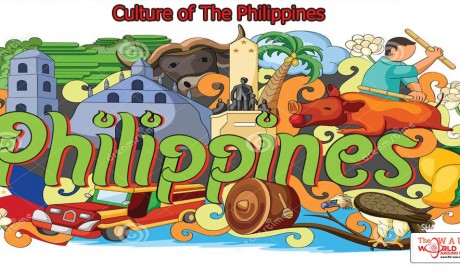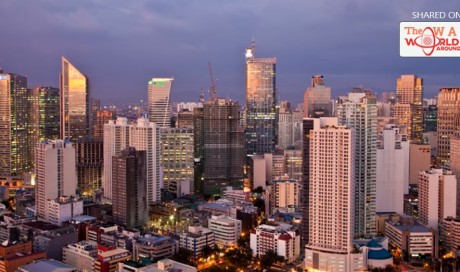Socialization
Infant Care. Infants are raised by family members. Young children are sent to live with their grandparents or aunts for extended periods. People who live outside the country leave their children with the family for the preschool years.
Infants spend their waking time in someone's arms until they can walk. They are part of every activity and learn by observation. Someone will remain in the room with them when they sleep. Infant mortality is high, and so great care is taken of babies. Helpers and older sisters assist with the dayto-day care of babies.
Child Rearing and Education. Children are seldom alone in a system in which adults desire company and do not understand the need for privacy. Children have no pressure to become toilet trained or to learn to eat at the table. They are spoon fed or eat from a parent's plate until the age of six. They must learn respect for authority, obedience, and religious faith. Self-esteem is fostered. A child's first birthday is celebrated with a party.
Filipinos regard education as the path to upward mobility. Ninety percent of the population over ten years of age is literate. The Department of Education, Culture and Sports (DECS) is the largest governmental department. Approximately twelve million elementary school pupils and five million secondary students attended school in 1999 and 2000. Education is compulsory until age twelve. Statistics indicate that children from the poorest 40 percent of the population do not attend school. Elementary education is a six-year program; secondary education is a four-year program. Pre-schools and kindergartens are seldom available in public schools but are in private schools. Children are grouped homogeneously by ability. First grade students begin being taught in Filipino; English is added after two months. In elementary and secondary schools, reading, science, and mathematics are taught in English while values, social studies, and health are taught in Filipino. Children learn some Filipino and English words from the media. "Linga franca" is an experimental approach in which students are taught in the native dialect and Filipino for the first two years and English in the third grade. This program came about as a response to concerns that English was being used more than were the native languages.
Elementary school, secondary school, and college students are required to wear uniforms. Girls wear pleated skirts and white blouses. Public school pupils wear dark blue skirts. Each private school has its own color. Boys wear white shirts and dark pants. Women teachers are given a government allowance to purchase four uniforms to wear Monday through Thursday. Men wear dark pants and a barong, a lightweight cotton shirt, or a polo shirt. Female teachers are addressed as ma'am (pronounced "mum"). Male teachers are addressed as sir. These titles are highly prized and are used by teachers in addressing one another.
Class sizes range from twenty to more than fifty in public schools. The goal is to keep class size below fifty. Pupils may have to share books and desks. Schools may lack electricity and have dirt floors or be flooded in the rainy season. The walls may not be painted. The Japanese, Chinese, and Australians have provided new classrooms, scientific supplies, and teacher training for the public schools. Private schools charge fees but have smaller class sizes. They have a reputation of providing a better education than do the public schools.
Computers are not readily available in elementary or secondary schools although DECS is stressing technology. President Estrada met with Bill Gates of Microsoft to procure computers and software for use in the schools.
Classrooms in both public and private schools have a picture of the Virgin Mary and the president at the front of the room. Grottoes to the Virgin Mary or a patron saint are found on school campuses. School days begin and end with prayer.
The school year runs from June to March to avoid the hot months of April and May. School starts at seven-thirty and ends at four-thirty with a break of one and a half hours for lunch. No meals are served at the school, although the parent-teacher association may run a stand that sells snacks for break time.
Dropping out is a serious concern. In 1999 and 2000, the high school dropout rate increased from 9 percent to 13 percent. The increase is attributed to the need to provide care for younger siblings or to get a job to enable the family to survive the high inflation and the currency devaluation that followed the Asian financial crisis. The DECS has a Non-Formal Education Division to meet the needs of out-of-school youth as well as the needs of uneducated adults. Programs include adult literacy, agriculture and farm training, occupational skills, and training in health and nutrition. Programs for at-risk youth are being added at the high school level. The Open High School System Act of 2000 is designed to provide distance learning via television for youths and uneducated adults.
Higher Education. A college degree is necessary to obtain positions that promise security and advancement. Approximately two million students attend colleges and universities. Each province has a state college system with several locations. The University of the Philippines, located in Manila, is a public university that is regarded as the best in the country. Private colleges are found in the major municipalities. The University of Santo Tomas in Manila is a private school that was established in 1611; it is the oldest site of higher education in the country. English is the primary language of instruction at the college level. Colleges and universities have large enrollments for advanced degrees since a four year degree may not be sufficient to work in the higher levels of government service.

...[ Continue to next page ]
Share This Post









